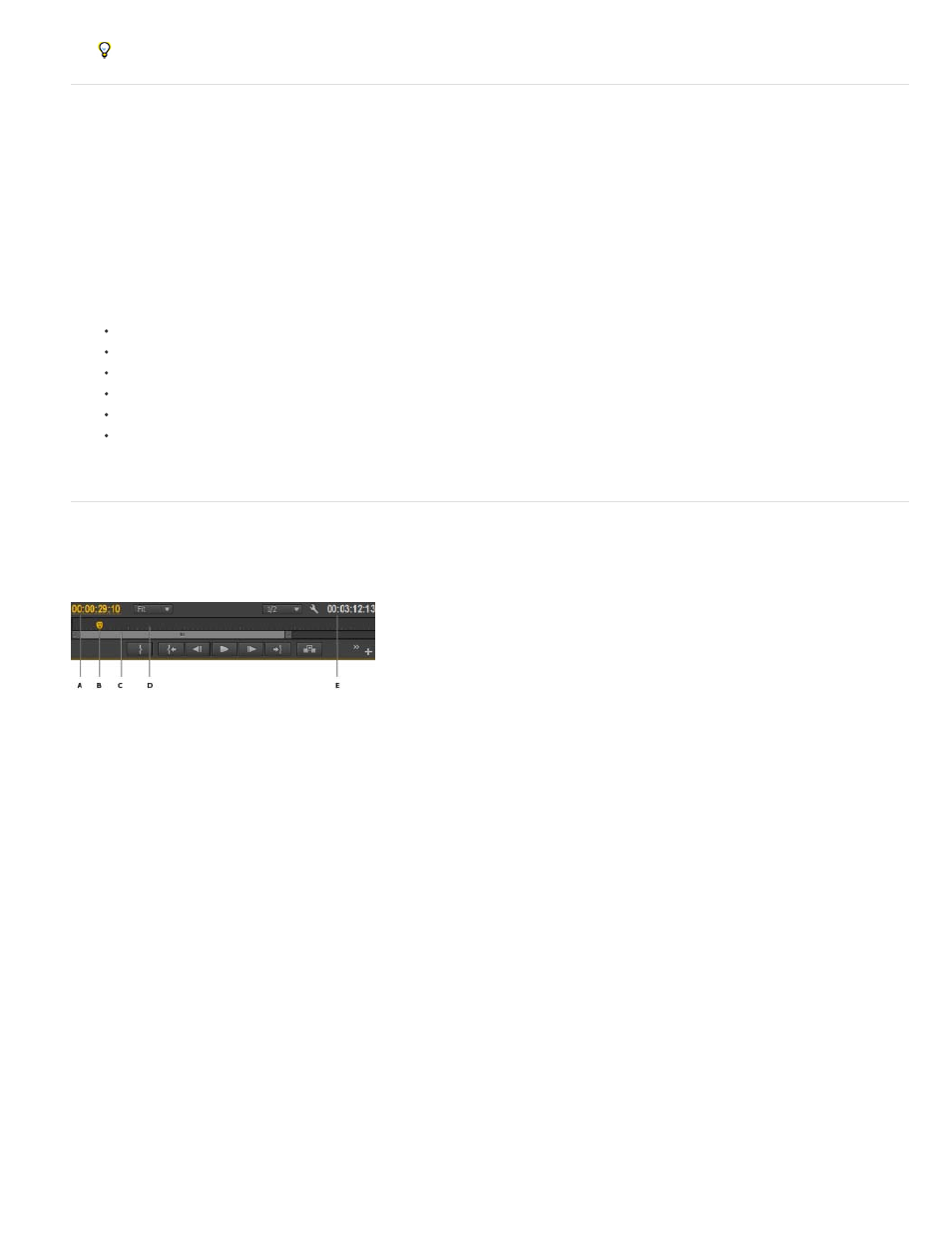Adobe Premiere Pro CS6 User Manual
Page 38

Time rulers
Playhead
Note:
Current time displays
Duration display
Zoom scroll bars
You can also close all clips and the Source Monitor itself by clicking the Close button in the Source Monitor tab.
Navigate clips in the Source menu in the Source Monitor
You can set keyboard shortcuts for navigating multiple clips loaded into the Source Monitor. Keyboard shortcuts can speed toggling of clips,
skipping to the first or last clip, or closing one or all the clips in the Source Monitor popup menu.
1. Select Edit > Keyboard Shortcuts (Windows) or Premiere Pro > Keyboard Shortcuts (Mac OS).
The Keyboard Shortcuts dialog box opens.
2. In the dialog box, click the triangle next to Panels, and then click the triangle next to Source Monitor Panel to reveal the keyboard shortcuts
for that panel.
3. Set keyboard shortcuts for any of the following commands:
Source Clip: Close
Source Clip: Close All
Source Clip: First
Source Clip: Last
Source Clip: Next
Source Clip: Previous
4. Click OK.
Using the Source Monitor and Program Monitor time controls
The Source Monitor has several controls for moving through time (or frames) in a clip. The Program Monitor contains similar controls for moving
through a sequence.
A. Current time display B. Playhead C. Zoom scroll bar D. Time Ruler E. Duration display
Display the duration of a clip in the Source Monitor and sequence in the Program Monitor. Tick marks measure time using the video
display format specified in the Project Settings dialog box. You can toggle the time rulers to display timecode in other formats. Each ruler also
displays icons for its corresponding monitor’s markers and In and Out points. You can adjust the playhead, markers, and the In and Out points by
dragging their icons in a time ruler.
In Premiere Pro CS6, time ruler numbers are off by default. You can turn the time ruler numbers on by selecting Time Ruler Numbers in the panel
menu of the Source or Program Monitors.
Shows the location of the current frame in each monitor’s time ruler.
The playhead was formerly called the "current-time indicator" (CTI).
Show the timecode for the current frame. The current time displays are at the lower left of each monitor’s video. The
Source Monitor shows the current time for the open clip. The Program Monitor shows the sequence’s current time. To move to a different time.
Alternatively, click in the display and enter a new time, or place the pointer over the time display and drag left or right. To toggle display between
full timecode and a frame count, Ctrl-click (Windows) or Command-click (Mac OS) the current time in either monitor or a Timeline panel.
Show the duration of the open clip or sequence. The duration is the time difference between the In point and the Out point for
the clip or sequence. When no In point is set, the starting time of the clip or of the sequence is substituted. When no Out point is set, the Source
Monitor uses the ending time of the clip to calculate duration. The Program Monitor uses the ending time of the last clip in the sequence to
calculate duration.
In Premiere Pro CS6, zoom scroll bars take the place of the viewing area bars. Zoom scroll bars correspond with the visible
area of the time ruler in each monitor. You can drag the handles to change the width of the bar and change the scale of the time ruler below.
Expanding the bar to its maximum width reveals the entire duration of the time ruler. Contracting the bar zooms in for a more detailed view of the
ruler. Expanding and contracting the bar is centered on the playhead. By positioning the the mouse over the bar, you can use the mouse wheel to
34
